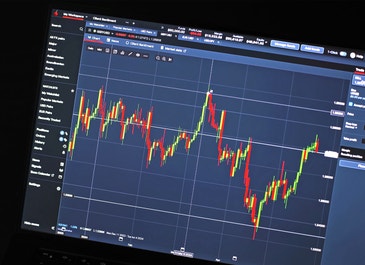The Forex industry, referred to as Forex or FX, is a powerful setting where currencies are exchanged globally. To achieve this fast-paced industry, traders should understand how to identify trends and apply successful strategies. Reliability in Forex trading is not almost creating repeated profits but also about managing risk and changing to adjusting market conditions.

Understanding Forex Styles
A trend in the Forex industry refers to the general direction in which a currency couple is moving over a certain period. Trends can be upward (bullish), downhill (bearish), or sideways (ranging). Realizing these traits is important for making educated trading decisions.
Uptrends occur when prices consistently make higher levels and higher lows. Downtrends are identified by lower heights and lower lows. In a sideways market, cost movements inside a range with no obvious direction, and that usually happens all through periods of industry uncertainty.
Traders use trendlines, moving averages, and complex indicators to help recognize and confirm trends. Understanding the power and way of a trend enables traders to align their techniques with the market's momentum.
Key Forex Trading Methods
Several trading methods can support traders obtain regular results in the Forex market. The usefulness of every technique depends upon the trader's knowledge, time commitment, and chance tolerance.
Trend-following strategy
This process requires entering trades in the path of the prevailing trend. Traders by using this technique often rely on tools like moving averages, MACD, and ADX to verify tendency strength. The thought is to ride the trend for as long as it remains unchanged, leaving when signals of reversal appear.
Breakout strategy
Breakout trading centers around entering a posture when the value pauses out of a precise range or pattern. Traders look for key support and opposition degrees and place trades when price action breaches these degrees with strong volume. This strategy works well in areas planning for an important move.
Range trading technique
In this technique, traders take advantage of value bouncing between established help and opposition levels. It's most reliable in sideways areas where there is number apparent trend. Oscillators like RSI or Stochastic signs are frequently applied to recognize overbought or oversold conditions within the range.
Scalping technique
Scalping requires creating numerous small trades for the duration of the day to take advantage of small value movements. This strategy involves fast decision-making, large attention, and minimal transaction costs. Scalping can succeed for skilled traders with access to fast delivery platforms.
Risk Administration for Uniformity
No technique can assure gains without appropriate risk management. Traders must establish their chance threshold and collection stop-loss and take-profit levels for each trade. A standard rule is not to chance a lot more than one to two percent of trading money on a single position.

Sustaining a trading newspaper helps track efficiency, identify habits, and produce necessary modifications to strategies. Psychological control and discipline are similarly crucial in avoiding impulsive conclusions that can result in losses.
